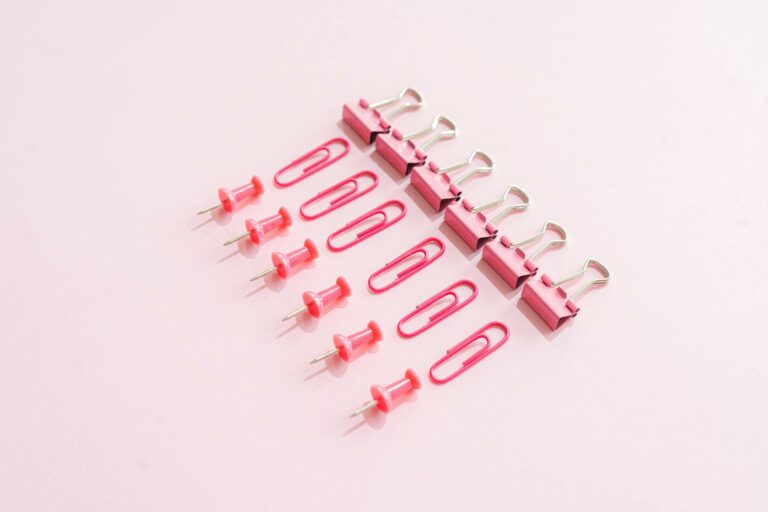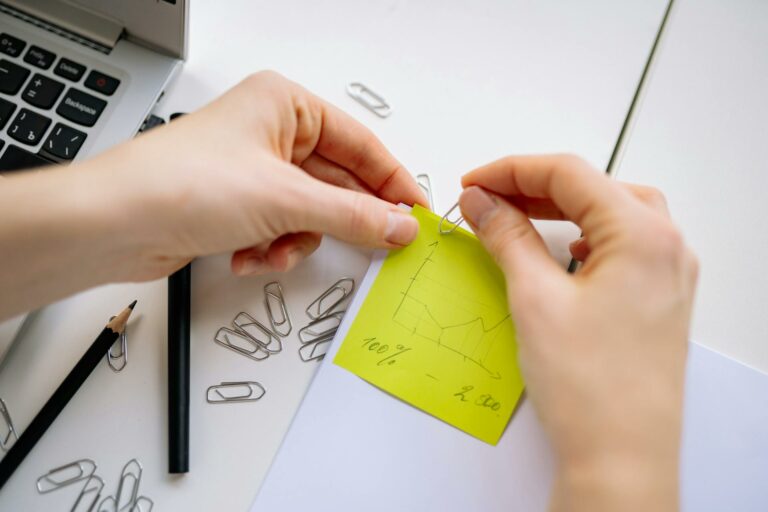Clips and fasteners are simple yet essential tools that can help you manage and organise your workspaces, secure documents, and fasten materials together. From the humble paper clip to more robust fasteners like split pins and bulldog clips, these small tools play a big role in keeping things tidy and functioning smoothly. Whether you’re working in an office, a workshop, or a classroom, knowing the types and uses of clips and fasteners can help you select the best tool for the job.
Types of Clips and Fasteners
Clips and fasteners come in various forms, each designed for specific purposes, ranging from holding a few pieces of paper to securing materials in industrial applications. Here are the main types you’re likely to encounter:
1. Paper Clips
Paper clips, or paperclips, are among the most common fasteners used in offices and schools. The traditional paper clip is made of wire bent into a looped shape, but variations like plastic-coated clips and coloured paper clips are also available.
2. Bulldog Clips
Bulldog clips are sturdy metal clips designed to hold large stacks of paper securely. They are more robust than paperclips and can clamp together thicker materials. Bulldog clips come in two forms – foldback clips that consist of two prongs that you pull back and squeeze to open the clip and letter clips that feature a powerful spring mechanism. Most letter clips have a pre-punched hole that you can use to hang compiled documents, while others have a magnet that you can stick to surfaces like filing cabinets and refrigerators.
3. Fasteners
Fasteners can transform any manilla folder or shelf file into a perfect filing solution. They make adding, removing, scanning and photocopying of your paperwork easy. The caveat is that they do require punching holes through documents, which may not be ideal for some paperwork.
4. Hook and Loop Fasteners (Velcro)
Velcro is a widely used fastener, known for its versatility and reusability. Velcro consists of two components: one side with small hooks and the other with loops. When pressed together, these surfaces create a secure bond. Velcro, and other brands of hook and loop fasteners are also available in a variety of forms, including strips, dots, and custom shapes.
5. Split Pins
Split pins, also known as cotter pins or brads, are metal fasteners with two prongs. They are typically inserted through a hole and then bent to secure the fastened materials.
6. Push Pins
Push pins, or thumbtacks, are small fasteners used to attach items to a surface, typically a bulletin board or a wall. They have a sharp point that allows them to pierce through paper, fabric, or other lightweight materials. Push pins come in various colours and designs, making them both functional and decorative.

What They're Made Of
Clips and fasteners are made from a wide range of materials, each offering different strengths and flexibility. The choice of material is determined by the intended use of the fastener, with common materials including:
- Metal: Many fasteners, such as paper clips, bulldog clips, and split pins, are made from metals like steel or brass. Metal offers durability and strength, which is essential for securing multiple sheets of paper or heavier materials.
- Plastic: Some clips, particularly variations of the paperclip and push pin, are made from plastic or have plastic coatings. Plastic clips are lightweight, colourful, and often more affordable than their metal counterparts.
- Velcro: Velcro is typically made from nylon or polyester. The hooks and loops are woven into fabric-like strips that are durable yet flexible. Velcro and other hook and loop fasteners can also have adhesive backings, allowing them to be attached to a variety of surfaces.
- Wood: In some cases, fasteners like push pins or clips may be made from wood, offering a more eco-friendly or decorative option.
Fun Facts About Clips and Fasteners
The history and evolution of clips and fasteners offer some fascinating insights into how these everyday items became essential tools in our lives. Here are some interesting facts:
- The Invention of the Paper Clip: The modern paperclip design, known as the Gem paperclip, was invented in the 1890s. The design has remained mostly unchanged for over a century and is one of the most iconic office supplies today.
- Velcro’s Origin: Velcro was invented by Swiss engineer George de Mestral in 1941. He came up with the idea after noticing how burrs stuck to his dog’s fur. Velcro has since become one of the most popular fastening systems in the world.
- Velcro in Space: NASA has used Velcro extensively in space missions, including to secure astronauts’ food trays and tools.
- Bulldog Clips Name: The name “bulldog clip” was inspired by the clip’s strength and tenacity in holding documents together, much like a bulldog holding onto something with a firm grip.
- Push Pin Patents: The push pin was patented by Edwin Moore in 1900. His invention became one of the simplest yet most effective ways to attach items to surfaces like cork boards.
- Split Pin in Aviation: The use of split pins in aircraft maintenance is so critical that there are specific regulations and procedures for their installation and inspection.
- Eco-Friendly Options: With the increased demand for sustainable office supplies, many manufacturers are now offering eco-friendly options for clips and fasteners. For instance, paper clips made from recycled metal and push pins with wooden heads are becoming popular alternatives for environmentally conscious consumers.
Common Uses of Clips and Fasteners
Clips and fasteners are used in a wide variety of settings, from everyday tasks in the office to more specialised applications in workshops and manufacturing. Here’s how some of the most popular types of fasteners are commonly used:
- File management: Perhaps the most common use for clips and fasteners is for file management and organisation. They’re a convenient way to keep important documents together instead of cluttered across your desk or loose in your drawer.
- Binding documents: The paperclip is most used to bind paper together without the need for staples or glue. It’s ideal for short-term fastening as it doesn’t cause any permanent damage to documents. Paper clips are a must for keeping reports, invoices, and notes organised.
- Compiling thicker stacks of paper: Bulldog clips are ideal for holding together thicker stacks of documents, reports, or artwork that paper clips may struggle to hold. Letter clips can also be used to post or hang documents as either a notice or to keep workspaces clutter free. Bigger bulldog clips can also be found in workshops to temporarily hold materials in place.
- Cable management: With the rise of remote work, the need for efficient and easy-to-use office supplies like Velcro strips for cable management and organisation has been incredibly helpful. These fasteners help keep home workspaces organised, making it easier to stay productive.
- Clothing: Velcro is also commonly used in the clothing industry as a fastener for shoes, jackets, and other garments.
- Mechanical applications: Split pins are frequently used in mechanical applications to secure the position of parts in machinery.
- Arts and crafts: Split pins are also used in various crafting projects, particularly for creating rotating mechanisms in paper crafts and scrapbooks.
- Posting notices: Push pins are often used to post notices or pictures onto bulletin boards, walls, and cork boards. They are commonly found in classrooms, offices, and public spaces where there’s a need to temporarily attach papers or other lightweight items.
- Markers: Push pins have also risen in popularity as a marker. Some businesses in the food industry have used them as markers on a map of where their customers are coming from. Push pins with decorative designs are also used to colour code notices, brochures, documents, and artwork in classroom and work settings.
Whether you’re bundling documents, securing cables, or organising your workspace, understanding the different types of clips and fasteners can help you choose the right tool for the job. With a variety of materials, applications, and designs, these small yet powerful tools play a significant role in our everyday lives.

